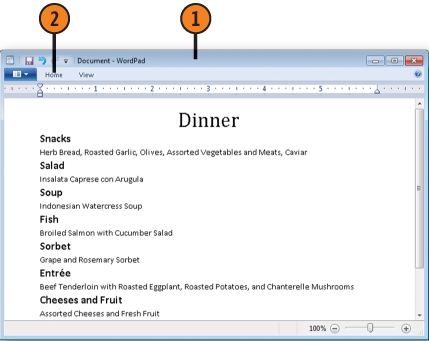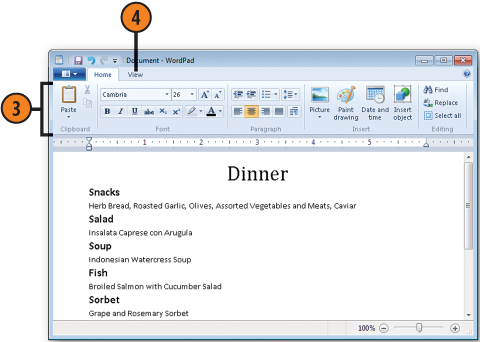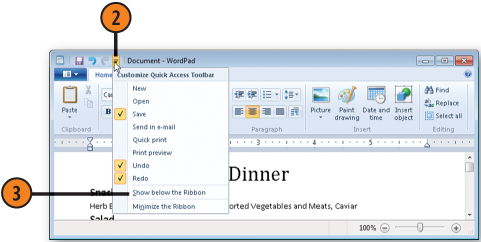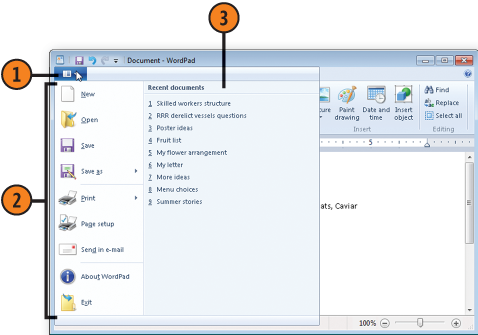WordPad and Paint, as well as
many other programs you can add—including Windows Live Movie Maker and
Microsoft Office 2007 and later programs—use the Ribbon and its different tabs instead of the standard menu structure to access the programs' commands and features. With the Ribbon,
you can switch among the task-oriented tabs and see all the available
options. Additionally, many items provide a live preview: You point to
something on the Ribbon—a style or a font, for example—and see immediately how it affects the appearance of your document.
1. Explore the Ribbon
Open one of the programs that use the Ribbon.
If
you see the command tabs but the Ribbon is minimized, click a command
tab to display the Ribbon temporarily, or double-click a tab to keep the
Ribbon visible.
Do any of the following:
Click a button to execute a command.
Click a down arrow to open a gallery, a drop-down menu, or a drop-down list.
Click a Show Dialog Box button to open a dialog box that contains additional commands and options.
Point to an item in a gallery to see its effect on the content of your document.
Click another tab and explore those items.
Tip:
The Ribbon is composed of tabs and commands. When the Ribbon is minimized, you see only the tabs.


2. Use the Quick Access Toolbar
Click a button on the Quick Access toolbar to execute an action.
Click the down arrow at the right of the Quick
Access toolbar, and, on the Customize Quick Access Toolbar menu, click
any unchecked command to add it to the Quick Access toolbar, or click a
checked command to remove it from the toolbar.
If you want the Quick Access toolbar to be located below the Ribbon instead of above it, open the Customize Quick Access Toolbar menu again, and click Show Below The Ribbon.
Note:
Try This!
With the Ribbon
in its unhidden state, double-click the active tab to minimize the
Ribbon, and then click any tab to display the Ribbon temporarily. Click
in your document to minimize the Ribbon again. Double-click the active
tab to have the Ribbon always displayed. Press Ctrl+F1 to hide the
Ribbon, and press Ctrl+F1 again to have the Ribbon always displayed.
3. Access More Commands
Click the program button.
Click
a command to execute that command. If a command has a right-pointing
arrow, a submenu appears with additional commands. Click a command on
the submenu to execute the command.
Click one of the recently used files to open that file.


